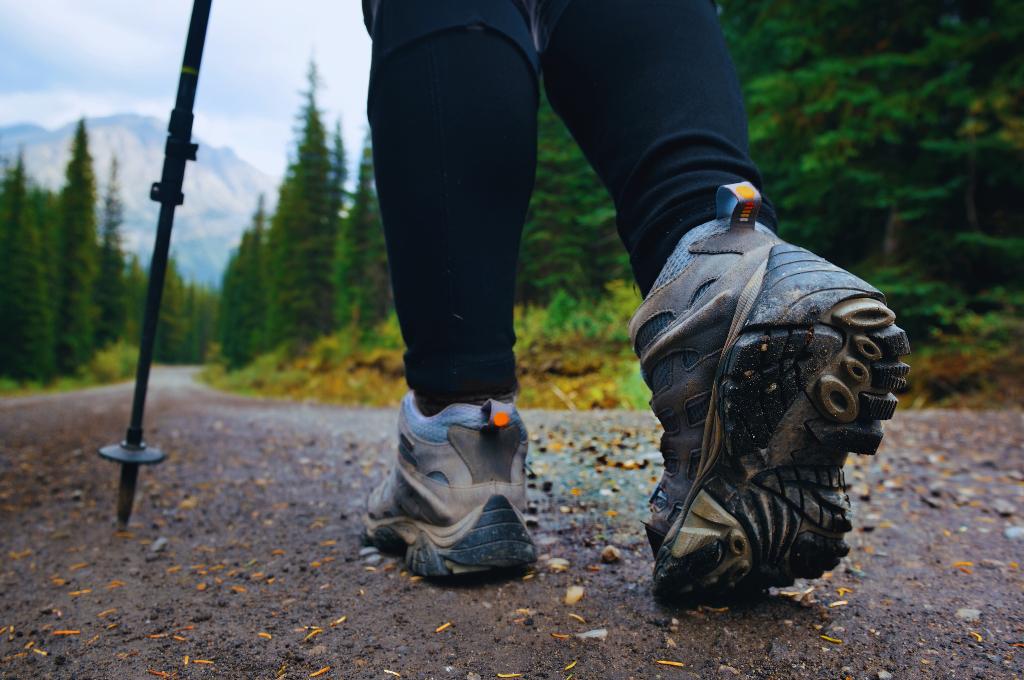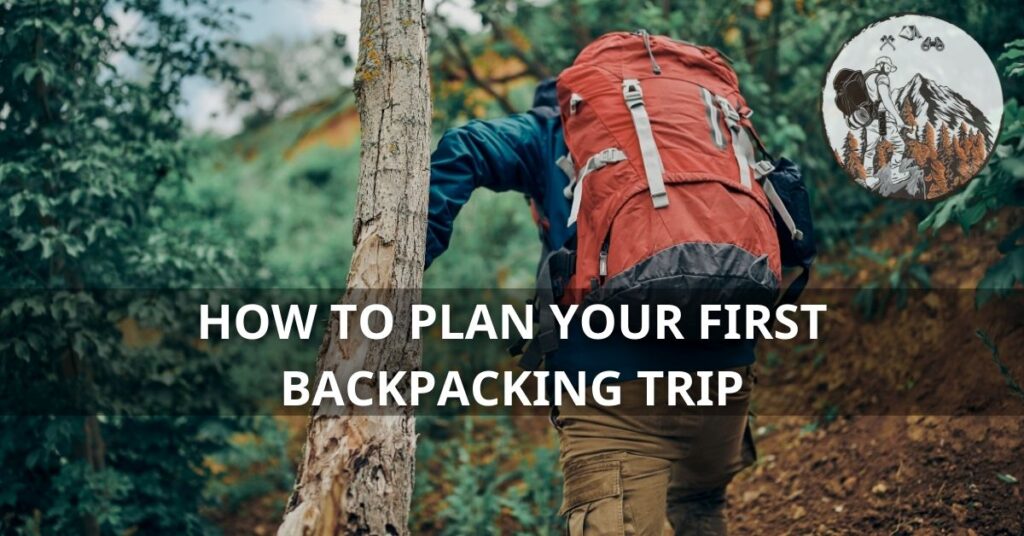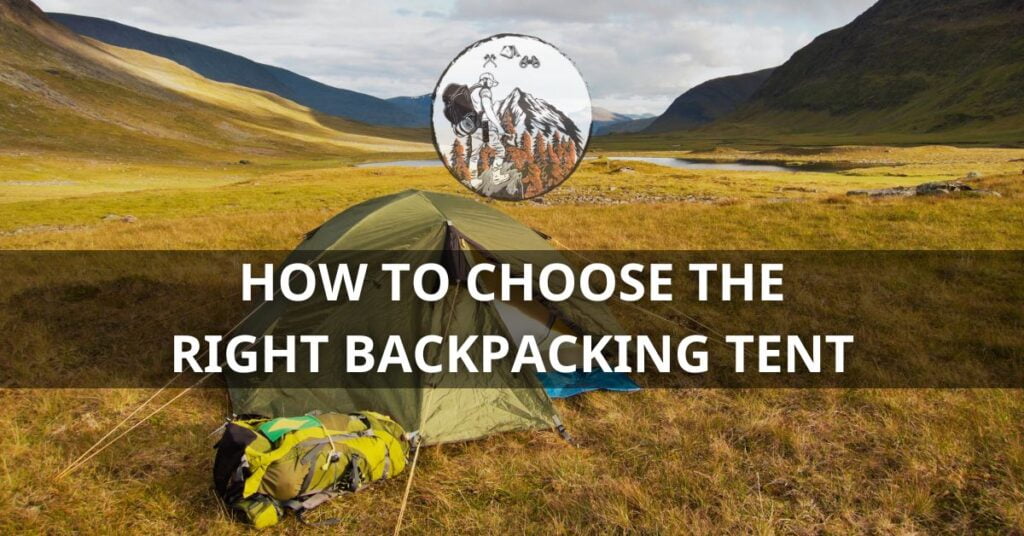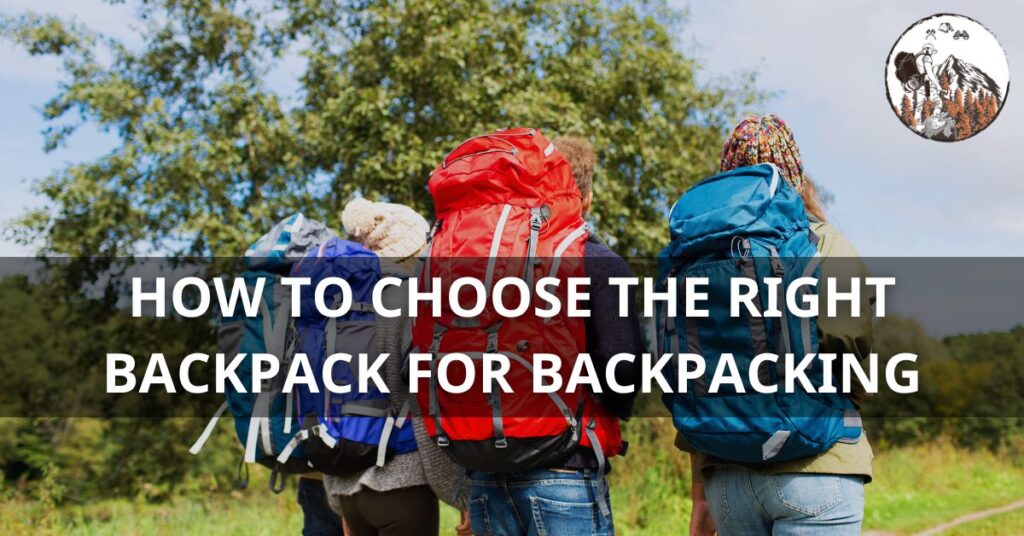Planning your very first backpacking trip can be both exhilarating and daunting. For first-time backpackers, the multiple phases of preparation, ranging from choosing the right gear to wilderness safety, can feel overwhelming. However, with the right approach and a solid plan in place, you can turn your dreams of conquering the backcountry into a fulfilling reality.
Here, we’ll guide you on how to plan your first backpacking trip through the essential steps needed to prepare for your maiden voyage into the world of backpacking. Whether you’re dreaming of a solitary trek across breathtaking landscapes or an adrenaline-pumping group adventure, our comprehensive guide will help you pack with purpose, travel with confidence, and experience the wilderness with all the joy it promises.
Let’s dive in!
Table of Contents
Setting Your Backpacking Goals
Before you dive into the logistics of planning your backpacking trip, it’s important to set clear goals and expectations. Decide what you want to achieve from your journey – is it the challenge of a 5-day trek, the photographic opportunities of a picturesque route, or the solitude in the heart of nature?
Defining Your Expectations and Objectives
The first step is to decide the duration of your trip. Be realistic and acknowledge your physical fitness levels. Your backpacking goals should also align with the timeframe you have available. Long weekends might call for a moderate 2- to 3-day trek, while a week-long sabbatical can allow for a more ambitious plan.
Do scenic views, adventure, or solitude top your list of must-haves for the trip? If you’re all about the vantage points, make sure to pick a trail known for its photogenic landscapes. Thrill seekers may want to explore routes that offer the chance to cross rivers or encounter diverse wildlife. Introverts and those seeking a peaceful outing will favor trails that are less frequented.

Researching Backpacking Destinations
Your destination can make or break your backpacking trip. For beginners, opting for well-traveled and beginner-friendly trails is the safest and often most rewarding. Start by exploring options in National Parks with established routes and facilities.
Choosing Beginner-Friendly Trails
When selecting a trail, consider the distance, terrain, and elevation gain. Online resources, National Park websites, and local outdoor clubs can provide insights into the best trails for novice backpackers. Look for detailed descriptions that include trail conditions, typical weather patterns, and noteworthy landforms along the way.
Utilizing Online Resources and Trail Reviews
Community forums and review sites offer valuable peer advice that can flesh out the official descriptions. Be on the lookout for recent reviews to get a sense of real-time trail conditions. Through these platforms, you might gain insights on seasonal factors, recent trail updates, and sometimes overlooked pro tips.
Understanding Trail Difficulty and Terrain
Trail difficulty grading systems vary by region and can provide context for what you’re getting into. An aware and informed approach is your best friend.
Grading Systems for Hiking Trails
Familiarize yourself with the trail rating system, which often classifies trails as easy, moderate, or difficult. These ratings consider factors such as distance, elevation gain, and the nature of the path.
Considering Elevation Changes and Terrain
Strenuous climbs and descents can quickly tire you out, as can uneven or rocky terrain. High-elevation trails might also pose a challenge for those unaccustomed to thinner air. Be sure to prepare accordingly and know your limits.

Selecting Appropriate Backpacking Gear
The right gear is fundamental to a successful and enjoyable backpacking trip. As a beginner, simplicity, and functionality should be your guiding principles.
Essential Backpacking Gear Checklist
Your backpacking essentials fall into several categories:
- Shelter: A sturdy, lightweight tent or a reliable hammock system.
- Clothing: A layered ensemble suited for the expected weather, including moisture-wicking base layers, insulating mid-layers, and waterproof outer layers.
- Sleeping System: A sleeping bag rated for the lowest temperature you anticipate, a sleeping pad for insulation and comfort, and a compressible pillow if desired.
- Cooking and Food: A compact stove, fuel, a pot for cooking, utensils, food bags for hanging, and lightweight, nutrition-packed backpacking meals.
- Water: A filtration system, water bottles or a hydration reservoir, and backup purification tablets or a steripen.
- First Aid and Emergency: A well-stocked first-aid kit, fire-starting supplies, a multitool, a whistle, a headlamp with extra batteries, and a multi-day supply of personal medications.
Lightweight Cooking Equipment and Hydration Systems
Choose efficient and portable cooking tools that can withstand the conditions of the trail. For hydration, consider a filtration system like the Sawyer Squeeze or a UV purifier.
Planning Your Backpacking Itinerary
Building a realistic daily plan is crucial for maintaining energy and morale. Balance adventure with practicality.
Daily Mileage and Campsite Selection
Once you’ve chosen a trail, map out your daily mileage. Aim for a pace that challenges without overwhelming you. Factor in elevation change, rest breaks, and any scheduled stops at points of interest. As you plan, note available campsites and their proximity to water sources.
Identifying Water Sources and Rest Spots
Ensure your itinerary includes regular spots to refill water. Overexertion without ample hydration can lead to fatigue or illness. Similarly, plan rest stops at scenic outlooks or tranquil areas to soak in the ambiance and rejuvenate your spirit.
Preparing Physically for the Trip
Adequate physical training can transform your backpacking experience from a struggle to a delight. Both cardiovascular fitness and strength training are beneficial.
Building Endurance Through Hiking
In the months leading up to your trip, incorporate regular hikes into your routine, progressively increasing in duration and difficulty. This helps condition your muscles and develop stamina for long days on the trail.
Strength Training and Cardio Exercises
Focus on functional fitness exercises targeting your legs, core, and back. Compound movements and weighted squats can simulate the strain of carrying a loaded backpack.
Securing Necessary Permits and Reservations
Many popular backpacking destinations require permits, often with limited availability. Plan ahead to avoid disappointment.
Researching Permit Requirements
Visit the official park’s website or contact the local ranger station to understand the specific permitting process for your chosen trail. Note any restrictions on group size, camping locations, and the window for permit applications.
Booking Campsite Reservations
With your itinerary in hand, secure reservations for backcountry campsites where necessary. Pay close attention to the rules and best practices for camping at these sites to ensure a harmonious experience for all.

Planning Your Backpacking Meals
Balanced nutrition and efficient cooking can liven up your backpacking menu. Lightweight foods with high nutrient content are your best bet.
Lightweight and Nutrient-Dense Foods
Opt for dehydrated meals that are easy to prepare and pack a nutritional punch. Incorporate nuts, seeds, dried fruits, and energy bars for snacks on the go.
Meal Planning for Each Day
Devise a meal plan that meets your caloric needs, includes variety, and aligns with your culinary preferences. Use the “cook in the bag” method for straightforward meal prep with minimal cleanup.
Learning Basic Navigation Skills
Even established trails can become disorienting, especially for first-timers. Trusty navigation skills can keep you on the right path.
Understanding Trail Markers and Maps
Familiarize yourself with common trail markers and how they correspond with your map. Practice orienteering in local parks to get a feel for using topographical maps. Note trail intersections and unique landmarks.
Navigating with Compass and GPS
A reliable compass combined with your understanding of map reading is a powerful tool in planning and executing your hike. Modern GPS systems offer additional security and precision. Remember, electronics can fail, so always carry a backup map and compass.
Weather Preparedness and Safety
Nature can be capricious, and it pays to be ready for surprises. Check the forecast and plan accordingly.
Checking Weather Forecasts
In the days leading up to your trip, monitor weather predictions for the location and the nearest town. Pack appropriate clothing and gear to handle a range of conditions, from high heat to unexpected rain or cold snaps.
Emergency Preparedness and First Aid
A thorough understanding of first-aid principles is paramount. Consider taking a wilderness first-aid course to feel more confident. Familiarize yourself with common backcountry injuries and their treatment.
Packing Leave-No-Trace Principles
Backpacking’s beauty lies in its untouched landscapes. Embrace the Leave No Trace ethos to protect your environment.
Minimizing Environmental Impact
Every piece of trash you bring into the backcountry should return with you. Proper waste disposal is critical to maintaining the integrity of wilderness areas. Respect wildlife as spectators, studying from a safe distance and minimizing your disturbance.
Conclusion
Embarking on your first backpacking trip is a transformative experience. By following this step-by-step guide, you’ll lay a solid foundation for an adventure that’s both thrilling and safe. Remember, the most important part of your journey is to savor every moment, immerse yourself in the beauty of the trail, and appreciate the solitude and simplicity that nature offers. So lace up your boots, hoist that pack, and take your first steps toward a lifetime of outdoorsmanship.
Preparation is key, but flexibility is vital. Embrace the unexpected, learn from each trip, and let the trail guide you. Whether it’s the grandeur of the Great Smoky Mountains or the tranquility of a desert trail, your first backpacking trip will be a touchstone in the mosaic of your adventures. Safe travels, and happy trails!
Frequently Asked Questions (FAQs)
Q. What is the ideal backpack size for a beginner?
Typically, a 50-liter pack is suitable for most beginners. It’s ample for multi-day trips and encourages you to pack light.
Q. How do I choose the right trail difficulty for my first backpacking trip?
Err on the side of caution. If it’s your first time backpacking, consider starting with a designated easy-to-moderate trail.
Q. Are there budget-friendly gear options for beginners?
Yes, there are many affordable gear options for beginners. Prioritize quality and functionality over price when choosing gear.
Q. Can I go backpacking alone as a beginner?
It’s generally safer to start with a small group for shared responsibilities and safety. As you gain experience, solo trips can be enriching, but always inform others of your plans.
Q. How do I handle encounters with wildlife?
Educate yourself about the types of wildlife in your chosen location and follow recommended safety practices. In most cases, making noise while hiking will alert animals to your presence.
Q. What do I do if I get lost on the trail?
First, stay calm. Then, step back and retrace your steps. If you still can’t find the way, use your map and compass to navigate toward a known landmark or trail.
Q. Are there safety tips for camping in bear country?
Store food securely and use bear-proof containers when possible. Follow all park regulations and guidelines for bear safety.
Q. How can I minimize the environmental impact of my trip?
Carry out everything you carry in, including food scraps and toilet waste. Use established campsites when available and practice fire safety.



